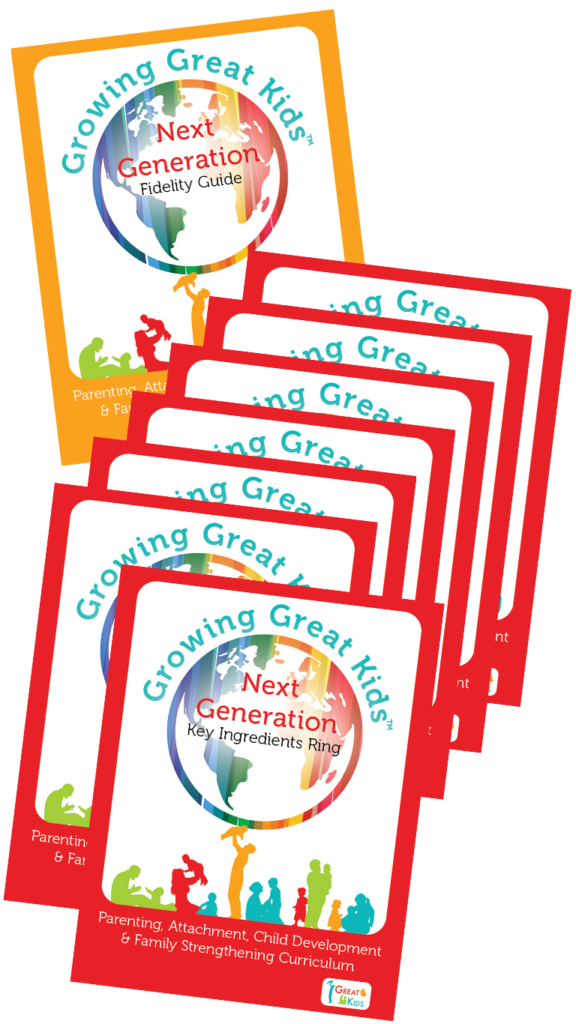As parents, we worry when our children don’t seem to have a good appetite. But have you noticed that there are other times when they are very hungry and eat a lot? Toddlers’ appetites change from day to day. This week’s topic is Nutrition For Toddlers. We will explore: the transition to solid foods; what toddlers need to eat to grow healthy brains and bodies; and how to use the Growing Great Kids curriculum tools and components to support parents to make informed nutritional choices for their children.
At about a year of age, infants transition from infancy to toddlerhood. During this time, toddlers experience a variety of adjustments including changing from breast milk or formula feeding to the introduction of solids. They are also ready to start developing self-feeding skills and awareness of food tastes and preferences. While this phase is exciting, it also comes with a set of new responsibilities for parents and caregivers.
Parents often feel challenged by providing healthy and appropriate foods for toddlers, along with structuring mealtime while teaching their children about acceptable table behaviors.
Let’s start with when the ideal time is to introduce complementary foods (liquids, semisolid, and solids)? According to the Women, Infant, and Children (WIC) Nutritional Guide, complementary foods should be introduced when the infant is developmentally ready for them. They should gradually progress through the introduction to foods that vary in texture, consistency, and increasingly larger portion sizes. When different types of foods are introduced too early, there is little benefit to the infant and it may even be harmful due to the possibility of choking, developing food allergies, or causing an infant to consume less than the appropriate amount of breast milk or infant formula. On the other hand, introducing new food types too late may result in an infant developing nutritional deficiencies or possibly difficulties in learning to eat a variety of foods, should the child miss a period of developmental readiness for eating solids (USDA’s WIC, Infant Nutrition and Feeding Handbook, 2009).
Did you know that GGK provides several resources on Toddler Nutrition? The Growing Great Kids Manuals: Birth to 12 months, 13-24 months, and 25-36 months all incorporate a module called Basic Care. Every Basic Care Module provides a subsection on age-specific nutrition information starting from the time the baby is born. These conversation guides allow you to explore with parents what they already know about good nutrition for infants and to build progressively on their knowledge base and skills to promote making healthy food choices for their children.
The 13-24 month unit includes a subsection called Good Nutrition for Toddlers. This conversation guide is designed to share information on the nutritional needs of toddlers, including foods to avoid and healthy finger foods. It also provides suggestions for making meals and snacks enjoyable learning experiences, while promoting independence for toddlers. This conversation guide includes the What Toddlers Need to Eat to Grow Healthy Brains and Bodies handout. As you are discussing this handout with parents, they gain a better understanding of the food groups listed below, appropriate food portions, and their impact on development:
- Fruits and Vegetables
- Meat, Fish, and Beans
- Milk and Dairy
- Grains, Cereals and Bread
Also, this subsection includes the Forbidden Foods and Favorite Finger Foods for Toddlers handout. With this handout, parents learn about the types of foods that are considered unsafe due to their texture, size, shape or ingredients, as well as the foods that nutrition experts recommend for toddlers. Check it out!
Another essential GGK tool is the Body Builders Daily Do – a set of parenting skills designed to support growing excellent physical development and health. As you know, the Body Builders Daily Do includes 4 categories: Good Nutrition, Responsive and Preventive Health Care, Daily Exercise, and Predictable and Safe Environments. The Body Builders Daily Do Handout lists the things kids need and what specific activities parents can do to support optimum physical development and health. Because children need
On September 2015, The Centers for Disease Control and Prevention published a study led by Ronette R. Briefel and a group of colleagues on Parents’ Perception and Adherence to Children’s Diet and Activity. The study indicates that, in the U.S., from 2011 through 2012, 8.1% of infants and toddlers (birth to 24 months) had high body weight and 8.4% of preschoolers (age 2-5 years) were obese. They reported that these statistics are related to a variety of parental practices in early childhood including the timing of the introduction of solid foods, the types and amounts of foods consumed including fast foods, and lack of physical activities. This study also incorporated the American Academy of Pediatric recommendations for childhood obesity prevention including eating 5 servings of fruits and vegetables daily, limiting consumption of sugar-sweetened drinks, families eating meals together regularly, and limiting consumption of fast foods (Centers for Disease Control, Briefel et al, 2015).
Remember…….When parents are introduced to these modules in GGK and put into daily practice the Body Builders Daily Do, they feel motivated to make healthy choices for their children. This lays the foundation for helping their children develop healthy eating habits that will last a lifetime.
WORKS CITED
USDA’S Women, Infant and Children- WIC (2009). Infant Nutrition and Feeding Handbook.U.S. Department of Agriculture. Revised March 2009. Retrieved from https://wicworks.fns.usda.gov/wicworks//Topics/FG/CompleteIFG.pdf
Centers for Disease Control. Briefel, R.R., Deming D.M., Reidy, K.C. (2015). Parents’ Perceptions and Adherence to Children’s Diet and Activity Recommendations: the 2008 Feeding Infants and Toddlers Study. https://www.cdc.gov/pcd/issues/2015/15_0110.htm

